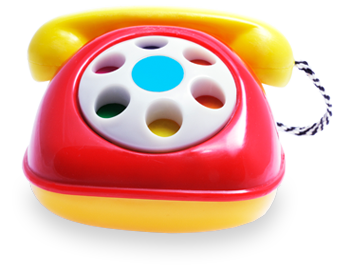Children can experience frequent ear infections because the insides of their ears are not yet fully developed. Normally, a child’s eustachian tubes -- which run from the middle ear to the back of the throat -- drain secretions from the middle ear and keep the pressure behind the eardrum equal to that of the outer ear. Young children have short, straight eustachian tubes, which can prevent proper pressure equalization. Swelling or inflammation from a cold or allergies can also block the tubes and cause a buildup of fluid in the middle ear. This fluid can become infected with bacteria or a virus.
Chronic Ear Infections
Middle ear infections are common in children and often resolve on their own or with antibiotics. However, when they occur frequently, more aggressive treatment may be recommended to ensure the infection does not damage your child’s eardrum. Duke’s pediatric otolaryngologists are specialists in treating disorders that affect the ear, nose, and throat. They identify the cause of your child’s chronic ear infections and recommend effective treatment to clear the infection, restore any temporary hearing loss, and prevent future illness.
About Chronic Ear Infections
Potential Complications
Untreated chronic ear infections can lead to several complications, including:
- Cholesteatoma: In severe cases, a skin cyst (cholesteatoma) may develop in the middle ear or mastoid (part of the skull behind the ear). The cyst can cause problems with hearing and excessive ear drainage.
- Tympanic Membrane Perforation: The eardrum may tear from repeated infections. The hole sometimes closes on its own but may need surgical repair.
- Hearing Loss: While hearing loss associated with chronic ear infections is rarely permanent, it can occur when an untreated infection damages the eardrum, the bones of the ear, or (in very rare instances) the hearing nerve.
Duke Health offers locations throughout the Triangle. Find one near you.

Tests
Our pediatric otolaryngologists typically diagnose chronic ear infections based on your child’s symptoms -- ear pain, fever, irritability, temporary hearing loss, and clogged feelings in the ears -- and by looking at the eardrum using an otoscope. This lighted instrument lets the doctor see the eardrum. A red, inflamed eardrum with fluid behind it usually signals an infection is present. Other tests used to check for middle ear infections include:
Pneumatic Otoscope
This tool blows a puff of air into the ear to see how the eardrum moves. If there is fluid behind the eardrum, it will not move easily.
Tympanometry
This test uses sound and air pressure to check the flexibility of the eardrum at different pressures.
Audiometry
Used to test hearing, there are many audiometry techniques available to match each child's age and developmental level.
Consistently Ranked Among the Nation's Best Children's Hospitals
Duke Children's Hospital & Health Center is proud to be nationally ranked in 10 pediatric specialties.

